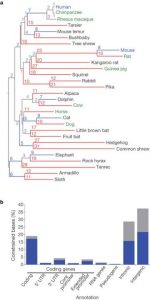STEM
Do we Have Junk DNA?
By Hanne S. Finstad, founder of Scientist Factory and Ph.D.
In the 1980s, biology lecturers told their students that only 2% of DNA contain essential information. The rest, they said, was junk DNA. I always had a hard time believing it. Why would cells bother copying large amounts of DNA every single time they divide if it wasn’t important?
Today’s understanding is quite different. We’ve discovered that nearly all the DNA in a cell is read in the form of RNA. As well as the famous messenger RNA molecules that contain recipes for proteins, cells make large amounts of micro RNA copies from the “junk.”

The function of these small RNA molecules is largely unknown. Everyone who works in the field of molecular biology has gotten a new challenge. A new player has entered the field: micro RNA. In order to understand more about the “junk,” 73 scientists from leading universities in the United States got together and put down a heroic effort. They have sequenced the genomes of 29 mammals since 2005! They are now in a position where they can compare the DNA of rabbits, kangaroos, and hedgehogs to humans. By looking for areas that are preserved in these different species for millions of years of evolution, they can trace areas of DNA with important functions. The results show that even though only 1.5% of human DNA contains recipes for proteins, 5% is conserved and most likely serves important functions. Not to mention, a comparison of the DNA of non-mammal vertebrates shows that 55% of DNA is unique to mammals.
What do these findings mean? It turns out that only 30% of the newly discovered genetic sequences are of the kind that codes for proteins. The scientists discovered 3788 potential new parts of genes, called exons. These findings can prove important because it is still difficult to precisely define what a gene consists of.
Sources
Nature, vol 478, 27 oktober, s 476-482, 2011
